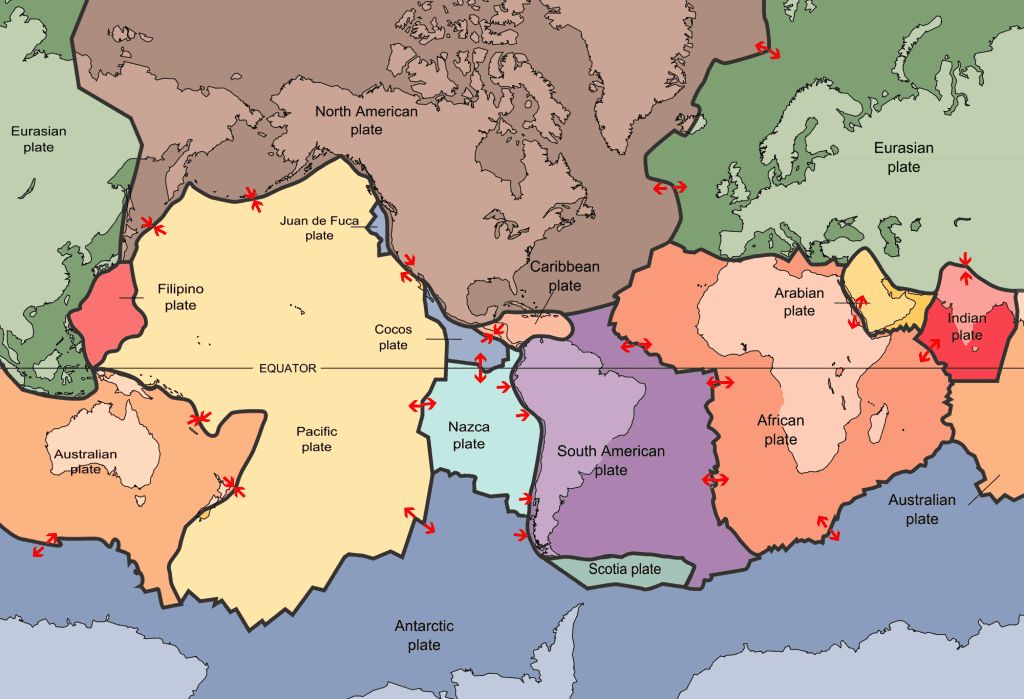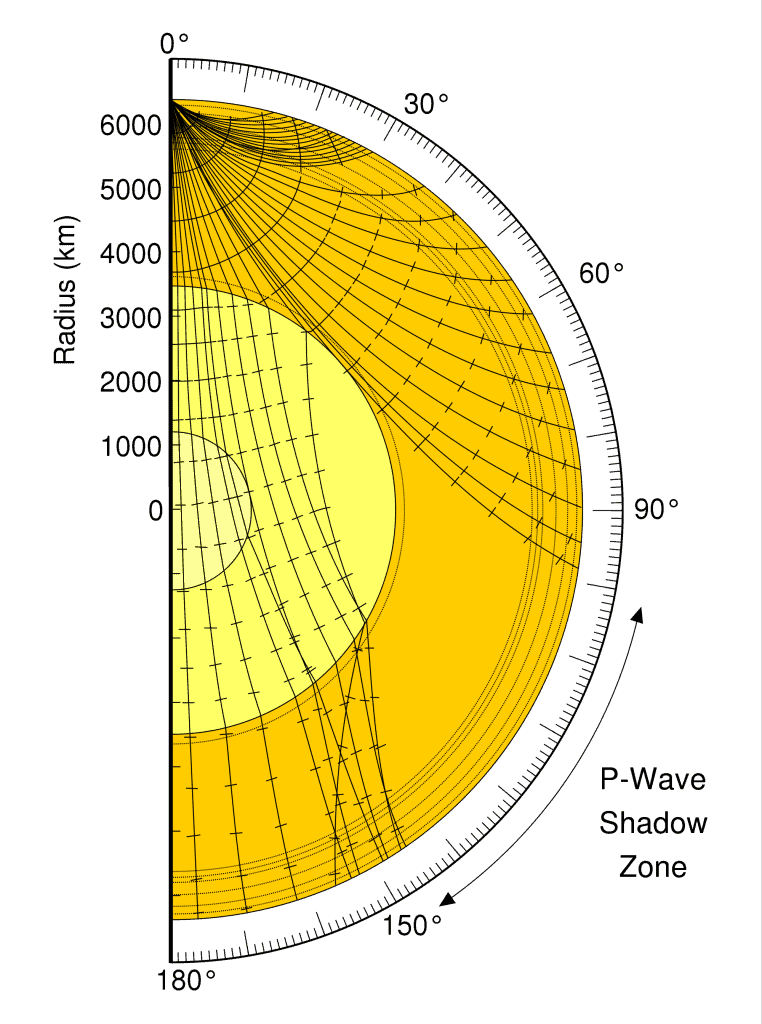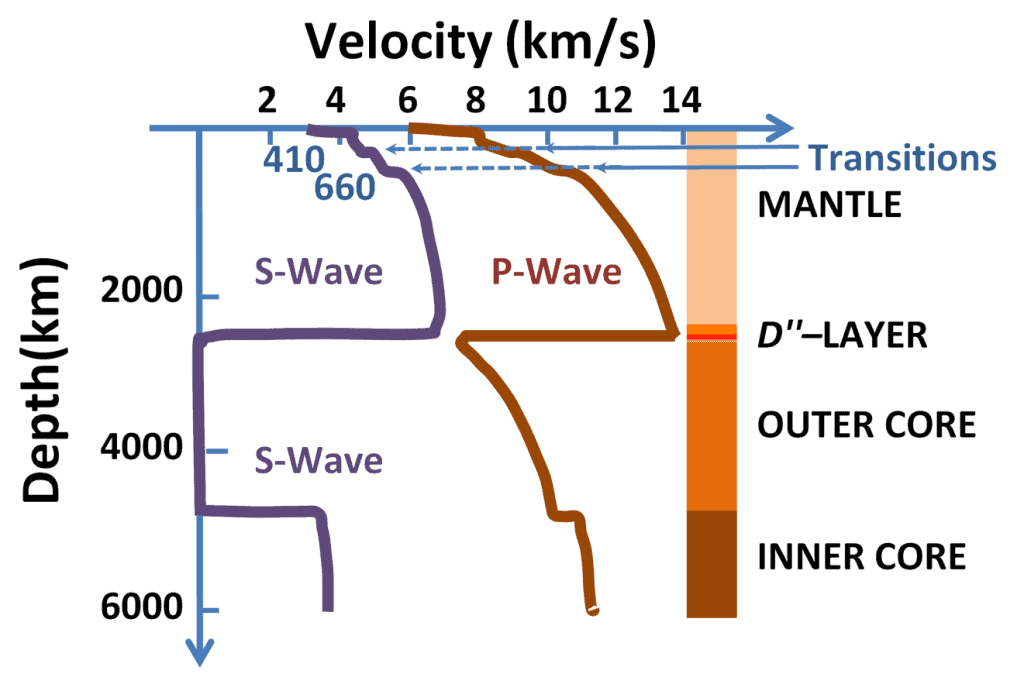The Seven Layers Of the Earth Explained With Complex Science

The Crust
The crust is everything we can see and study directly. The thinnest layer of the Earth, the crust still measures about 40 km on average, ranging from 5–70 km (~3–44 miles) in depth. But at the scale of the planet, that’s less than the skin of an apple.
There are two types of crust: continental and oceanic crust. Oceanic crust can be found at the bottom of the oceans or below the continental crust; it is generally harder and deeper, consisting of denser rocks like basalt, while continental crust contains granite-type rocks and sediments. The continental crust thicker on land.

The crust is not one rigid thing, but it’s split into several tectonic plates. These tectonic plates are not stationary, but are in relative motion one from another. Depending on the relationship and geologic setting, there are three types of tectonic plate boundaries: convergent (moving one toward the other), divergent (moving away from the other) and transformant (moving laterally).
These plates “float” on the soft, plastic upper mantle.
The Mantle

The mantle extends down 2,890 km, making it the thickest layer of Earth. It makes up about 84% of Earth’s volume. Everything we know about the mantle we know indirectly, as no human study managed to go beyond the crust. Most of the things we know about the mantle we know from seismologic studies (more on that later).
The mantle is also divided into several layers, based on seismologic properties. The upper mantle extends from where the crust ends to about 670 km. Even though this area is regarded as viscous, you can also consider it as formed from rock – a rock called peridotite to be more precise. Below that, the lower mantle extends from 670 to almost 2900 kilometers below the surface.
It’s basically accepted by now that the mantle is not in a steady state, but rather in a state of constant motion. There is a general convective circulation, with hot material upwelling towards the surface and cooler material going deeper. It is generally thought that this convection actually directs the circulation of the plate tectonics in the crust.

Most earthquakes are formed on the surface, in the crust; as the plates ebb and tow tension creates, and when that tension releases or when something breaks you have an earthquake. However, earthquakes can also happen in the mantle, and at those pressures you can’t possibly talk about faulting and breaking. In subduction areas, where one plane goes beneath another, earthquakes have been observed at depths of up to 670 km. The mechanism around these earthquakes is still not well understood, but one of the theories is that some minerals shift from one state to another, changing their volume in the process. This change in volume can lead to earthquakes.
However, we are getting closer and closer to understanding the mantle – even without getting there. In recent times, researchers have gone close to replicating the high temperature/pressure in the mantle, and high-level computer models are also revealing some of its secrets.
How we know about the Earth’s layers
We can only see very small fractions of the Earth’s crust, which itself is a small fraction of our planet – so how can we know all these things?

Well, the best source of information we have is seismic waves. When an earthquake takes place, it releases pressure waves which then propagate throughout the entire planet. These waves carry with them information from the layers they pass through – including the mantle and the core. By studying the propagation of By studying the propagation of waves through the Earth we can learn about the physical properties of the Earths interior. For example, some waves propagate only through solid mediums, while others propagate through both solid and liquid mediums – so they can show if some layer is solid or not. Seismic waves sample narrow swaths of the Earth’s interior so we can also isolate the information they carry; by analyzing several earthquakes recorded at several seismic stations, we can produce a CAT scan-like analysis of an area.
Rays bend and reflect based on the properties of the environment it passes through, and the speed of the wave is also affected by the environment.
Furthermore, modern simulations in the lab showed how minerals likely behave at those temperatures and pressures, and we also have indirect gravitational and magnetic information, as well as studies on magma and crystals found on the surface – but the bulk of the information comes from global seismology. It’s simply amazing that without even going close to it, we can know so much about the layers of the Earth.
I Hope this has helped you in your Scientific
Journey
If You have any Concerns You May Comment
Below and I will try My Best to Answer


Comments
Post a Comment